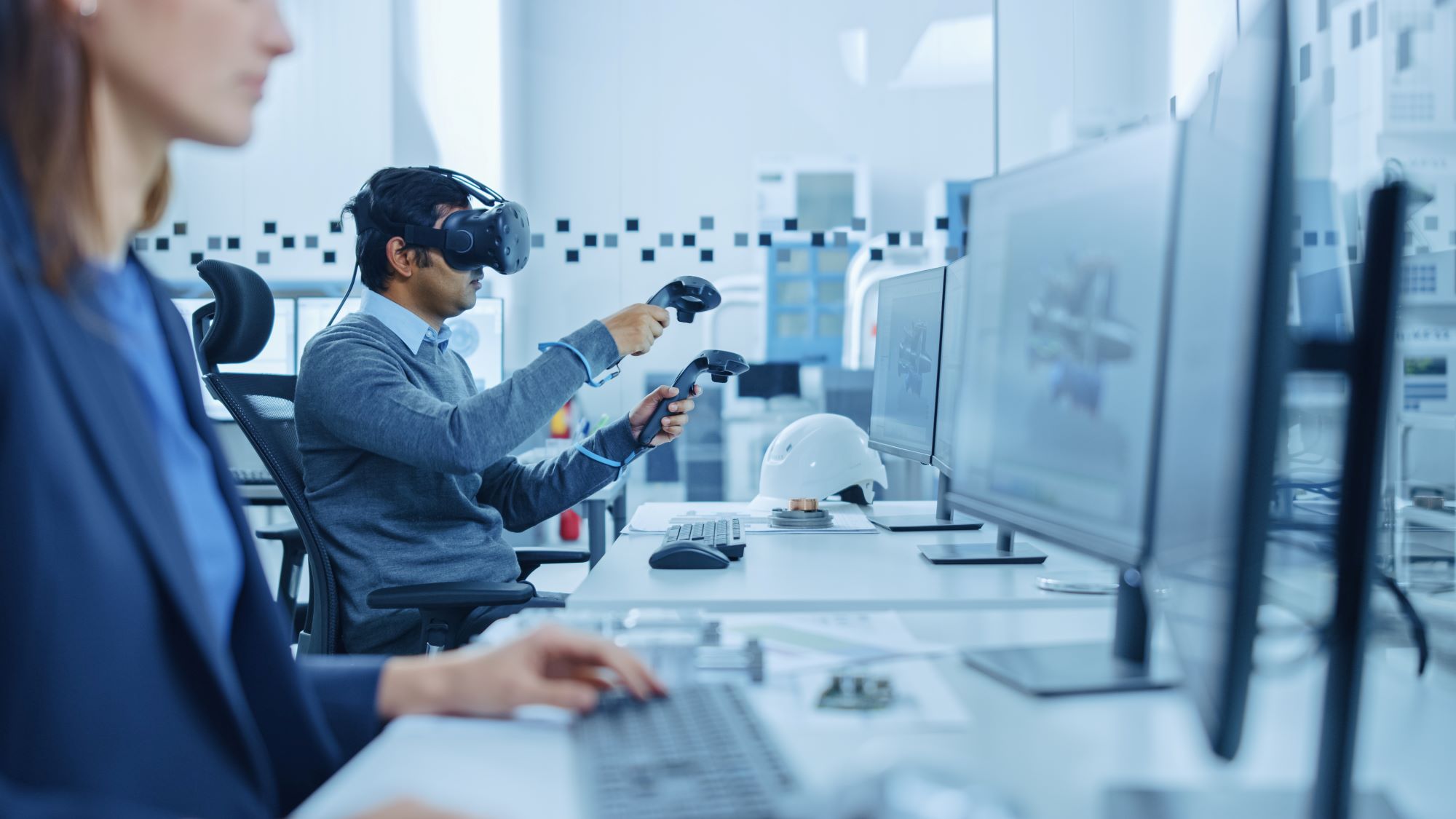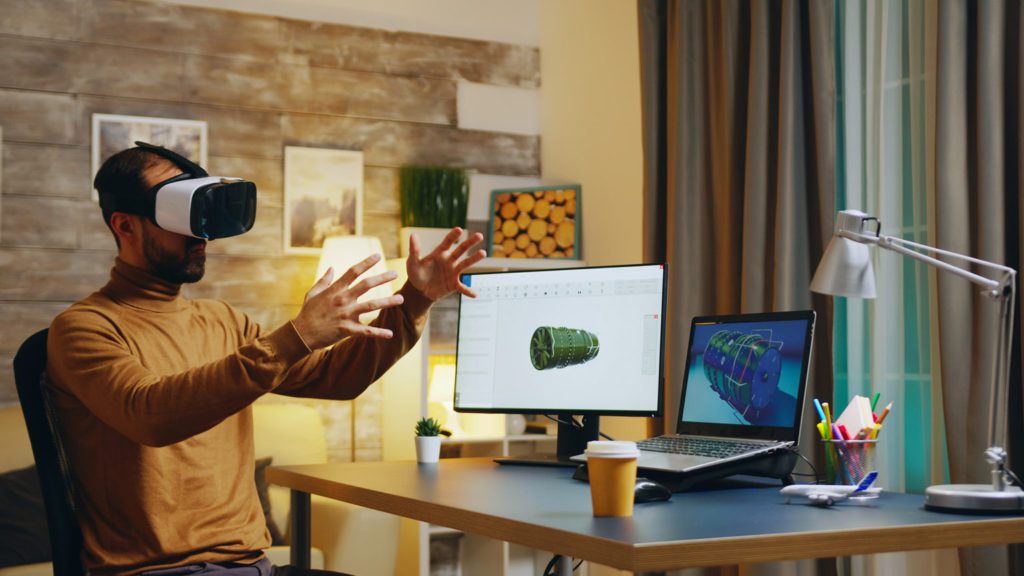
11 Jul VR Myths That Are Holding Back Your Organization’s Training Effectiveness
Virtual reality (VR) training is the new kid on the block compared to traditional training modalities. Immersive technologies have improved with each generation, providing more performance, freedom, and functionality to enterprise applications. If you haven’t been keeping up with these changes, there can be a dark cloud or stigma prohibiting VR training from even entering the discussion regarding modernizing your training portfolio. This blog will identify some common concerns or myths around virtual reality training. I will confirm, dispel, or add context so that a more precise picture exists when determining if VR training solutions are the right fit for your organization.
Virtual Reality Training Will Make Your Employees Sick or Nauseous

The propensity to become ill in a virtual environment is a relative characteristic. Some people are more susceptible than others. I tend to be at the end of the spectrum that is highly susceptible to turning “green at the gills” during a bad VR experience. It can take a while to recover from these symptoms. The good news is that VR sickness is preventable and is typically caused by a poorly developed solution.
The issues can often be traced to the experience’s overall design, development, and delivery. Developing VR training that will not make the general population nauseous is a task that usually comes with industry experience and the application of common sense. To completely eliminate the chance of users becoming sick is less common, which is why working with an experienced developer is important.
At Futurus, we begin to remove the nausea risk before the start of the development process. We review our client’s training needs and provide insight into best practices. We develop strategies that maximize immersion but offer a refined and stable experience. This process requires our knowledgeable team to spend more time upfront, which provides a stable digital foundation, resulting in a better overall experience in the finished and deployed solution. In addition, we employ various techniques within the development process that removes the likelihood of the user becoming queasy. I have yet to go through personally or witness someone becoming nauseous in one of our applications. There are very few immersive design companies that can make this statement.
Virtual Reality is a Replacement for Traditional Training
Please do me a favor. If a VR company ever says this, run away as fast as possible. VR will not replace traditional training any time soon. This does not mean virtual reality training cannot have an equal or a more significant impact than your current training. VR enhances or complements your current curriculum by allowing your organization to accomplish the impossible when compared to your traditional training portfolio. Here are a few examples of how VR can enhance your existing training lineup..
- The ability to train anywhere on:
- Equipment that may only be in a few locations throughout the world
- Enormous equipment or machines that are too big or impossible to transport easily
- Products or solutions that are prototypes
- The ability to perform dangerous procedures in a safe environment.
- Train on a virtual twin, which keeps the manufacturing line running. This increases productivity with less wear and tear on the equipment. This also eliminates physical product waste.
- The ability to see and experience areas that cannot be done without virtual reality (3D cross sections).
- Virtual Reality training can employ efficiencies that allow you to perform procedures or tasks with more repetitions than traditional training methods.
To Implement Virtual Reality into Your Organization, You Must be a Technology Expert

One of the more significant misconceptions about virtual reality training is that you must be a technology expert to pioneer or advance VR training in your organization. This could not be further from the truth. I have worked with large global organizations, and most of my contacts had little to no experience with VR, and if I had to guess, the word technology or innovation did not appear on their resume. What they all had in common was a unique (or not so unique) problem that VR could effectively and efficiently solve. As a client aptly said, “VR is my side hustle.” As funny as that statement may sound, these side hustles become huge ROI and game changers within their organizations. I have a lot of respect for those who go beyond their comfort zone and work with our teams to inspire, implement, and create change within their company.
At Futurus, our process and experience working with individuals and teams with a wide range of technical knowledge allows us to work with about anyone. We provide resources and perform the heavy lifting regardless of your prior experience with virtual reality training.
Virtual Reality Training Requires a Large Amount of Physical Space

A large amount of space is not a requirement for VR training. We have clients that perform their training at their desks. Although the trainee is immobile, they can still use handheld controllers to teleport around the environment with ease. The immersion level increases if you have an area around 6.5’x5′ clear of any obstacles (10’x10′ if the training will include a trainer and a trainee). This allows the trainee additional freedom to crouch down or move around during a training simulation. During our discovery process, we discuss the physical environments in which our clients expect the training to occur. We also incorporate special tricks and tactics to maximize immersion based on potential limitations, requirements, or future needs.
Virtual Reality Headsets are Not Hygenic
There are many ways to keep your head mounted displays clean and hygienic. Most organizations will use anti-bacterial wipes or provide inexpensive disposable VR covers or medical-grade silicone covers. It is important not to use harsh or abrasive chemicals as they can be harmful to the equipment. Futurus has put together a helpful video on how to safely clean your VR hardware. With little effort, a virtual reality head-mounted display can be more hygienic than traditional technologies like keyboards, mice, and other communication devices.
Virtual Reality is Expensive
So, let’s get the monkey off our back here. There are costs to developing custom virtual reality training. I have found very few companies that will do it for free. Even though the cost of developing content has regressed over the past few years, the common perception is that VR solutions remain expensive. I would argue that a significant factor is that too often many projects do not go beyond their “proof of concept.” If you are unable to go beyond the initial project, the benefits of scale perhaps were never realized, which means the time, energy, and resources that were invested may not see its true potential.
There are several reasons why projects never go beyond their proof of concept. In many cases, it could have been prevented by the company developing the solution. It is a problem within the industry, so it is an excellent question to ask a prospective VR development company how successful they are at developing solutions past an original proof of concept. At Futurus, we are proud that most solutions go beyond their original scope!
The perception that VR solutions remain expensive is often relative to the level to which the technology is understood, how the technology will be applied or developed toward a problem or opportunity, and the implementation or deployment rollout. When organizations become familiar with all the different variables and how they will apply them to their specific operations, that perception begins to change, and “expensive” now becomes an expense. At Futurus, we work alongside our clients to successfully consult, develop, and implement this technology to help achieve their goals and objectives and convert that expense into ROI.
Virtual Reality Training Should be Implemented in Every Organization
VR is not going to be an effective tool or wise investment in the current environment for every organization. That being said, companies both large and small are not investing or supplementing their current training and marketing solutions with VR for the “coolness factor.” While coolness can be a factor, it is towards the bottom of the list when most companies move forward with their investment. Companies continue to invest in this modality of training because it excels in areas where traditional training is ineffective. This is not a knock at traditional training methods. VR becomes another tool that can take your training to a different level. While VR may not be the most effective tool for every organization, there are far too many innovative companies out there that are not considering virtual reality to maximize their efforts towards safer working conditions, happier\productive\engaged employees, and improved customer experiences and product quality…..and yes, profitability!
The good news is that there is an easy way to get the ball rolling. It is not too late! Let’s schedule an introductory call and discuss your organization and the potential of VR (and Augmented Reality) as a way to make an impact on your training efforts!




